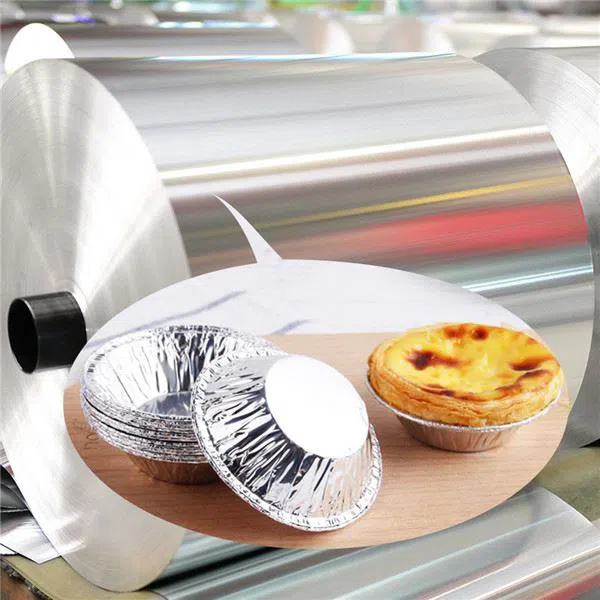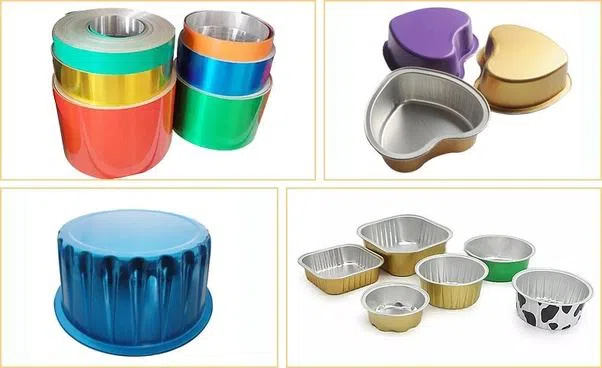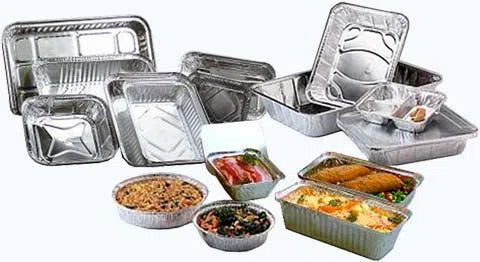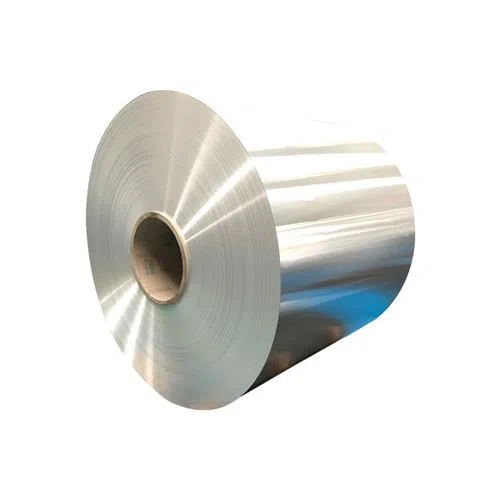In order to fight the spread of COVID-19 it is important to provide good logistics support, which ensures protection from exposure to the virus for frontline medical staff, aswell as safe guarding their own and patients' food and beverage supplies.
During this unusual period we need to consider not only the quality and palatability of foods, but also ensure safety aspects, such as protection from bacterial contamination. So distribution in areas affected by the pandemic is an important consideration, as is the efficiency of food production and the packaging. Other things to be considered include the disinfection and disposal of the growing amounts of food related waste. There should be a comprehensive solution which also takes into account aspects such as sustainability. Whether these foods and beverages are pre-cooked or fresh for transportation to the place of consumption, or being prepared ‘on site’ for canteen dining, these same issues need to be considered.
Currently plastic containers are still the most commonly used in the Chinese food packaging markets, especially in the take-out market. Aluminum foil containers can offerseveral benefits by comparison, particularly in the current situation. For example plastics containers are often unsuitable for heating, are not resistantto high and low temperatures and their sealing capabilities are not aseffective as foil. So, for meals that need to be heated in situ, the foil containers offer clear advantages and greater seal integrity means contamination risks are reduced. The conductivity of aluminum foil containers also means pre-heated meals stay warmer for longer. This means different working shifts and mealtimes can be accommodated, so everyone, including the frontline medical staff, gets a hot meal. In addition, in China, the disposal of plastic food containers is currently problematic in these frontline setting---they can not be sterilised, are difficult to compact and space for garbage production and processing is limited, therefore making transportation anddisposal is trouble some. Aluminium foil, on the other hand, is easier to clean,compact and is fully recyclable.
In China we believe that relevant hospitals, catering companies, restaurants, canteens andother take-out platforms should consider aluminum foil containers as the first choicefor food packaging in the current circumstances. They solve many problems to ensure food safety during this pandemic outbreak and meet the needs for preventing the spread of infection.
Advantages of using aluminum foil as meal containers are manifold. They are non-toxic and inert,safe and hygienic, high- and low-temperature resistant, environmentally friendly, energy saving, have good sealability, high-grade appearance, and areconvenient, quick and simple to use. Special emphasis should be placed on thesafety of aluminum foil as a packaging material.

Aluminum foil is processed from primary aluminium having been alloyed through processes such as rolling, and requires no other materials being introduced. During its production aluminum foil undergoes high temperature annealing which eliminates any bacteria and microorganisms on its surface. The production of aluminum foil meal containers are subject to both strict national standards and industry standards. The Chinese industry standard, aluminum foil Products for Catering and Cooking, which went into effect on April 1 this year, provides guidance for production, processing and quality assurance, as well as testing and market supervision, including detailed hygiene requirements. So aluminum foil meal containers are safe for food contact and do not contain bacteria or contribute to bacterial growth. In most cases, aluminum foil does not react with food stuffs, butsome require food-grade coatings, depending on the ingredients.
In China, besides the aluminum foil meal containers commonly used in airlines, recent years have seen more general use of these styles of container for domestic purposes in dailylife. Wider market development and application by many companies prove the aluminum foil container is suitable for China's expanding food take-out sector,delivery services and in the pre-packaged food industry. The use of aluminum foil containers is not only an important option for current public health and food safety issues, but also an important choice to promote green consumption, save food waste and practice the concept of sustainable development.
Here we highlight two aluminum foil container styles and packaging solutions particularly suitable forthe prevention and control of the COVID-19 virus:
1. Heat-sealable and wrinkle-free(smooth wall) aluminum foil containers
This kind ofaluminum foil container is premium quality with wrinkle-free edges, flat and smooth walls. The thickness is up to 1.5 times that of ordinary aluminum foil containers.This style offers better rigidity, are difficult to deform and convenient for storage and transportation. The exterior can be polyester coated and colours and designs can be customized with printing. Interior surfaces can use coatings to avoid black surfaces caused by oxidation from some foods. A film can also be applied to the interior in these circumstances. aluminum foil used for sealing can in corporate easy-open tear tapes for greater convenience and safety when serving.
The most obvious advantage of this style container, for use during the pandemic, is that thefood can be completely sealed. This ensures the food is not contaminated bybacteria and toxins during transportation and distribution, as well as maintaining clean liness in the hospital environment. Additionally aluminum foil’s excellent barrier properties can effectively prevent food deterioration. In areas such as hospitals, factories and offices where large numbers of people congregate, it is very important to ensure food safety and public health. This is particularly true in warmer weather, when insects and air borne bacteria areprevalent!
This container stylecan be use as separate packaging for each meal component or packaging of setmeals. The set meal can be packaged in different sizes to accommodate rice and a variety of dishes. This helps to maintain the original taste, freshness and nutritional value, as well as offering greater choice. These set meals can be packed in corrugated cases for bulk transportation and distribution.
If necessary, high-temperature cooking and sterilization can be carried out after the food is packed. So that, after cooling, these containers can be stored in refrigerated or frozen conditions, to extend the shelf life and allow subsequent cold chain transportation. In epidemic prevention and control, or disaster relief and rescue, it is suitable for mass production of meals and catering from central kitchens, food factories, canteens and even restaurants.
Automated packaging lines greatly improve the production of meals and being pre-packedthey are much easier to distribute. Food safety is better controlled through centralized sourcing of food ingredients, as well as standardised production and hygiene regimes. Each food package can be labelled or coded, so it can be effectively tracked and monitored.

Food packed inthese aluminum foil containers can go through secondary heating close to the point of consumption. A variety of cooking methods can be used, for example ovens, anaerobic heating, boiling, steaming and microwave ovens (for the microwave option the cover must be removed and each portion heated separately.)
Aluminum foil has high conductivity and minimizes the time and energy associated with food processing,refrigeration and secondary heating. Good thermal stability means it can withstand temperature changes during processing and packaging stages. Between -20°C and 250°C the molecular structure of aluminum foil is stable, so these containers can be used at temperatures ranging from quick-freezing to extreme baking and grilling and will not deform,crack, melt, scorch, or produce harmful fumes.
It is our firm belief that, particularly hospitals in pandemic hotspots (especially temporary intensive care facilities and mobile hospital units) as well as elsewhere,would benefit greatly from the use of aluminium foil containers for food distribution and catering. It is important to provide as many food options as possible and consider the different eating habits of medical staff and patients. Ideally these catering facilities should be relatively isolated at the hotspot locations and should be equipped with facilities for food refrigeration, food heating and food distribution.
These facilities should be staffed by specially trained personnel. Meals need to be sent in batches for secondary heating, so they are provided hot as required and in the correct quantities. A certain amount of storage capability will be necessary for prepared meals in aluminum foil sealed packaging. This reduces logistics,personnel and vehicles flow and improves catering capacity in emergencies, as well as food variety. If possible, meal-ordering services could be provided to medical staff and patients. Timely delivery also helps to avoid too many people eating together and ensures food safety as the sealed containers enable contactless handling.
It is essential in the fight against COVID-19 to provide effective and safe catering for medical staff as they work under high intensity and pressure. The proper care and nutrition for patients is an unmistakable social responsibility in the current situation.
Many manufacturers in China can mass-produce this style of aluminum foil container. They offer various specifications and shapes along with different colours and diversified printing. While they are often used for Chinese fast food, they are suitablefor global market applications for a range of products, both cooked and fresh.Some domestic producers have now designed and developed a series of specific sealing machines for these containers. For this type of application the machines have been designed for simple operation, a small footprint and good sealing speeds, to offer a comprehensive packaging solution.
2. Aluminum foil lunch box style container and dinner plate
These aluminum foil lunch boxes and dinner plate styles can be used in hospitals, as well as schools, factories, outdoor events, exhibition and conference centres, food service points and central kitchens.
The boxes can bemulti-compartment for rice and three or four different dishes suited to the Chinese diet. It can also be a single compartment box, used to separate different meals. This kind of aluminum foil container can be matched with covers of different types and materials (aluminum foil or paper).
The advantage of this aluminum foil container style is that is easy to fold and wrinkle, so it can be closed tightly with a suitable cover, using the folding edge of container tohold it in place, either on an automatic machine or manually. Then it can be wrapped again with aluminum foil paper, to further improve air tightness and heat preservation. Although this container is less airtight than heat sealable smooth walled, wrinkle free style, it has the benefit of being simple to use and much lower cost. It still retains the ability to be quickly reheated and releases no harmful substances following this heat exposure, so food safety is maintained. After use, the aluminum foil can be recycled, just as with the smooth walled variety. This aluminum foil container can replace the multi- compartment plastic alternatives which are still widely used in takeout, canteens and restaurants in China.
Aluminum foil dinner plates do not have a cover or lid. They can be used in dining areas to replacethe more traditional stainless steel or plastic plate used for meal services.The foil plates can also shaped to ‘nest’ on existing stainless steel and plastic dinner plates. The direct benefit of this application is that aluminum foil containers are cheap and disposable, while they avoid additional labour plus the material costs, such as water, electricity, and detergents used forcleaning other plate formats.

Currently it is very important to avoid the possible health risks associated with cleaning and repeated use of stainless steel and plastic plates. It can be hard to clean and then sterilise greasy dinner plates completely. It is also time-consuming and generates wastewater. During the current pandemic, particular attention needs to be paid to bacterial growth and virus transmission caused by poor cleaning and non-standard disinfection, through the adoption of effective health and safety solutions.
As we have seen,the benefit of aluminium foil containers currently used in hospitals and isolation sites is to provide a safe solution for disinfection and disposal of post-meal waste. Once consumed, tableware and leftover food need to be disposedof carefully to avoid any potential for spreading virus. If heat treatment isused to sterilise and clean the aluminum foil then this is effective and pollution free, but is not suitable for plastics.
These aluminum foil containers and plates are well-established and proven formats in China and are,again, being produced at large-scale. They are used in a wide variety of applications, such as airline meals, but also increasingly in take-out and catering outlets, pre-packaged foods, and bakery goods.
These lunch boxesand plates are now very popular for catering outlets in high volume applications. Recent examples are: Beijing/Shanghai Auto Show, Shanghai Disney,Xibei Catering, Bifengtang Delicious Food, Fresh Hema, and Kungfu Catering.While the smooth walled variety was chosen for the supply of meals for venue service staff and security personnel during the G20 summit held recently in China. They are also increasingly favoured as containers in the home delivery sector and the health food and supplement retail sector.

China is currently the largest producer of primary aluminium and aluminum foil worldwide, with hundredsof aluminium foil producers, many large scale, delivering to both domestic and overseas markets. Chinese output is more than 4 million tons annually. Thealuminum foil meal containers produced in China are exported in large quantities.
The majority of aluminum foil meal containers are used by national and international airlines,multinational chain stores and restaurants. Many aluminum foil products for baking and barbecues at home are made and produced in China. Over time China’s aluminium foil sector has developed internationally recognised levels ofproduction, quality, R&D, supply and service. This has helped it to createa fully effective supply chain and service system. This has helped it to meet the demands placed on it for prevention and control of COVID-19 as well as other disaster relief. Additionally these strong attributes will help it to continue to meet the demands for aluminum foil products internationally as well as inthe growing market at home.
At this critical moment in prevention and control of coronavirus outbreaks, it is important to highlight the role of aluminum foil containers in maintaining food safety and public health. The producers of aluminum foil and its products in China have been ready and willing to stand up and demonstrate corporate responsibility. They have and continue to work together with relevant Government and Municipal departments to supply meal containers, helping them to provide appropriate meal solutions and logistics to fight and control the virus.
Aluminum foil containers, for food packaging solutions, are, of course, applicable to a wide range of general applications. We are always ready to explore new ideas and market opportunities to enable us to contribute to the wealth and prosperity of our sector.




QR Code
